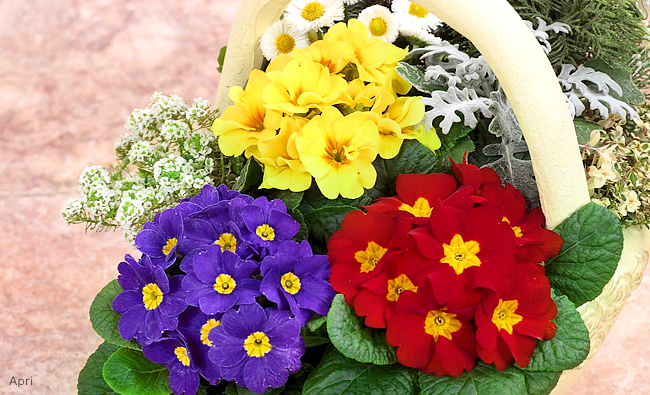- Top>
- Episode 11 Primula

Episode 11 Primula
Primula—well-loved all over the world. Believe in the possibilities!
The three flowers upon which our company has been founded, the Pansy, Petunia, and Primula, (also known as Sakata's three P's) have become a source of joy for many people around the world. This has, in no small part, been due to our firm's constant striving to "being the first" in horticultural technologies.

Primula polyantha "Claudia"

Primula obconica "Crystal"

Primula malacoides "Uguisu"
The most common types of primulas are Primula polyantha, Primula obconica, and Primula malacoides. Primula polyantha, a much-loved potted plant for containers and flowerbeds, did not originally grow in the wild. The plant is believed to be a hybrid of various wild species that belong to the Primula genus of the Primulaceae family grown across Asia and Europe.
This actually complicated the cultivation of the first primula. Because this open pollinated variety contains genes from several wild species, ancestral characteristics often appeared, and stable plant posture and flower color was difficult to attain.

Julian

Catalog including information about "Straight Color" and "Darling"

Juliet
At that time, flower colors of the open pollinated variety were fixed, and our company was a pioneer in color-differentiated sales, with what was known as the "straight color." With the world's first F1 Darling series announced in 1972, the problem was eliminated, and this marked the beginning of the primula breeding techniques utilized today.
In 1981, the Julian Hybrid, a polyantha crossed with P. juliae that originated in the Caucasus, was announced. With its small pretty leaves, small flower head, and many petals, it was so popular that it developed as a distinct category of the Julian type.
The Juliet series (the F1 Julian type developed in 1987), featured more uniformity than traditional varieties, and with its ability to bloom indoors during winters, it contributed to an increase in the demand of the primula.
In 2009, the Alacarte series, a hybrid of Polyantha and the veris type, was introduced. This hardy variety Which bloomed in winter and spring, had longer flower stalks and a three - dimensional shape. Known also as the Garden Primula, is popular because of the particularly small flowers that can brighten up a garden.

Alacarte

Apri
In 2012, the Acaulis-type Apri series, with short flower stalks, was announced as Sakata's 100th anniversary variety. Because of the extra early flowering, shipping started within the same year. Apri was much anticipated for its uniform flower postures and highly improved productivity, thanks to its high germination.
Primula, one of Sakata's three P's. The possibilities are endless!




